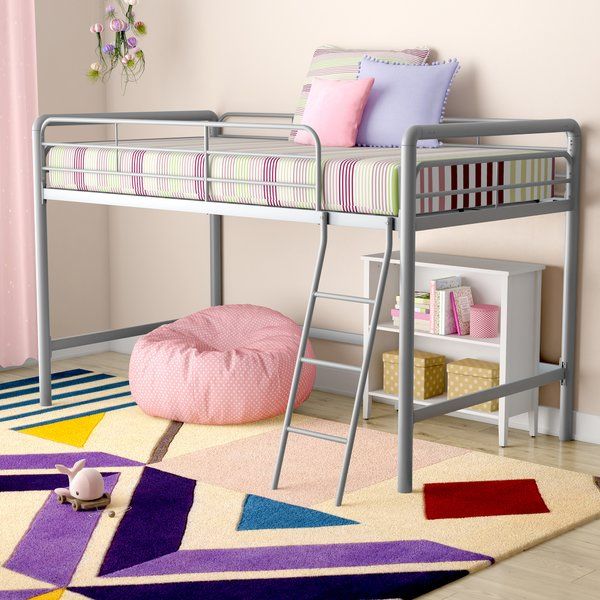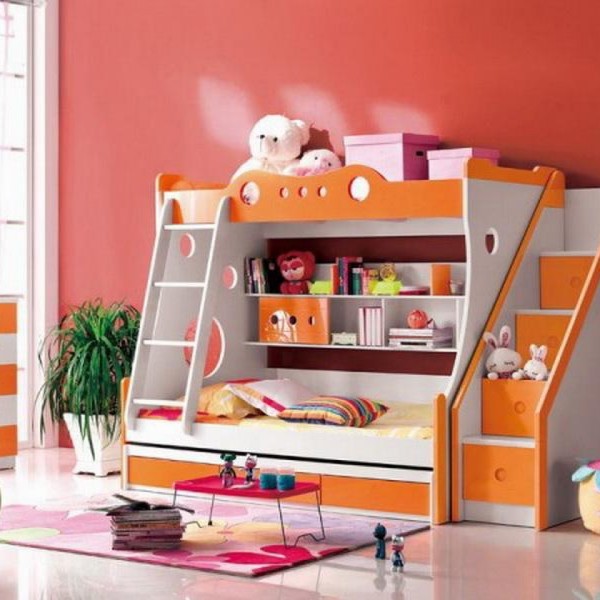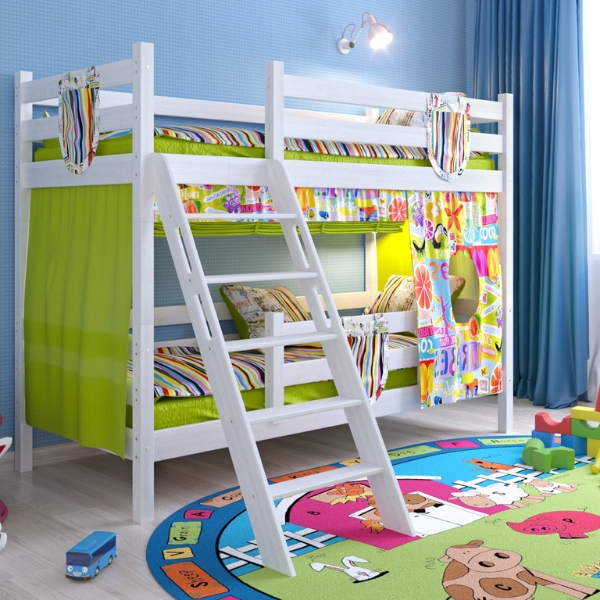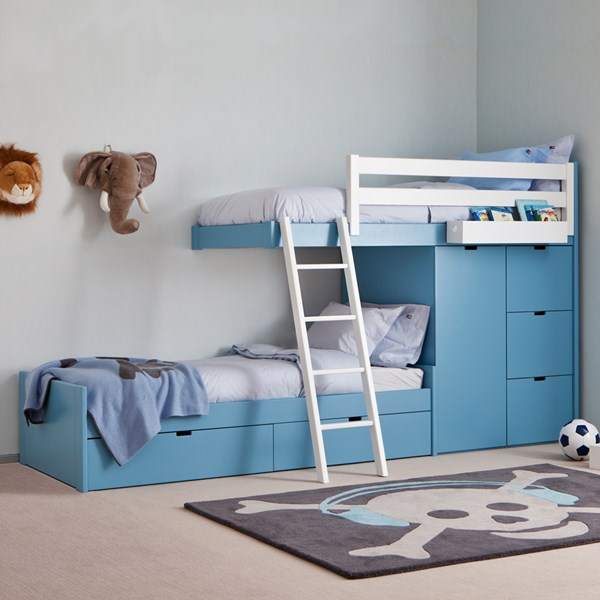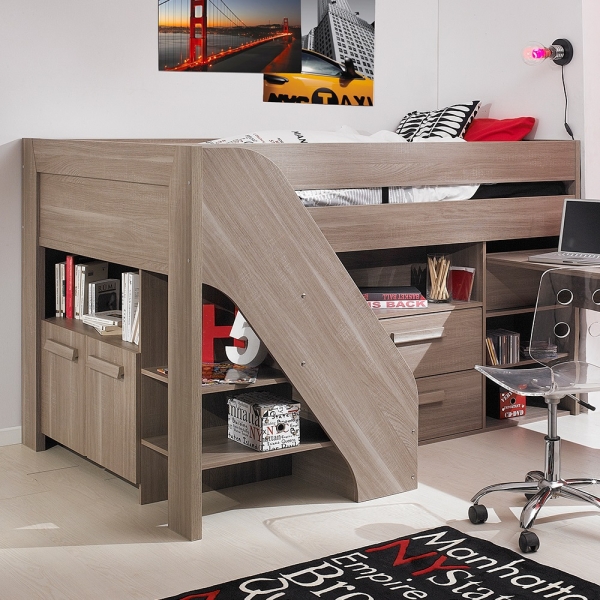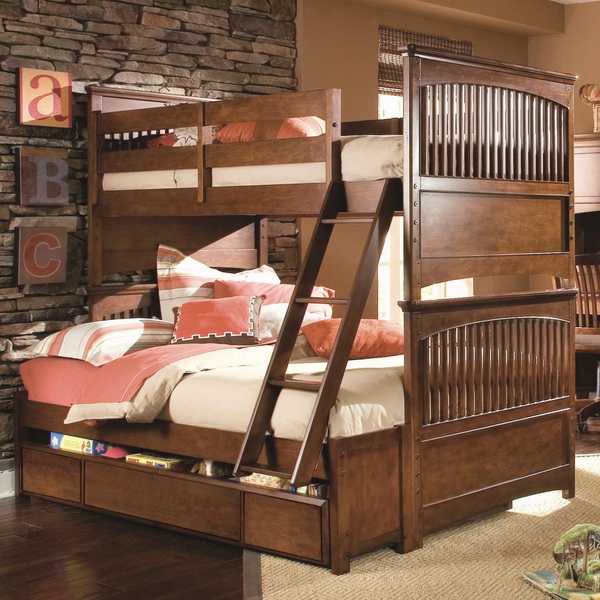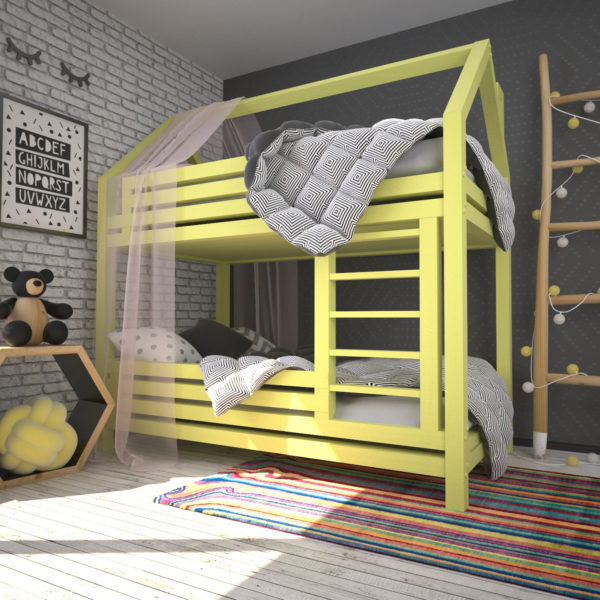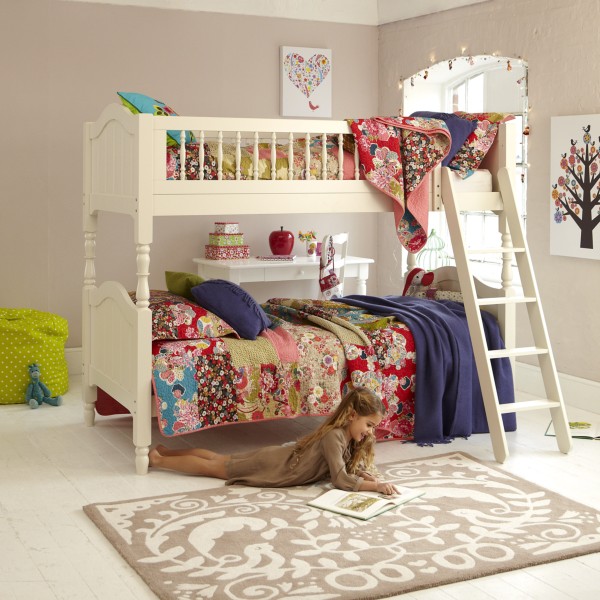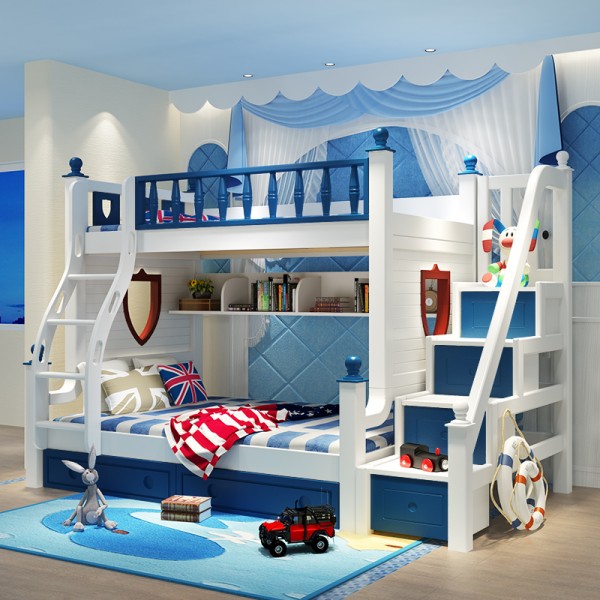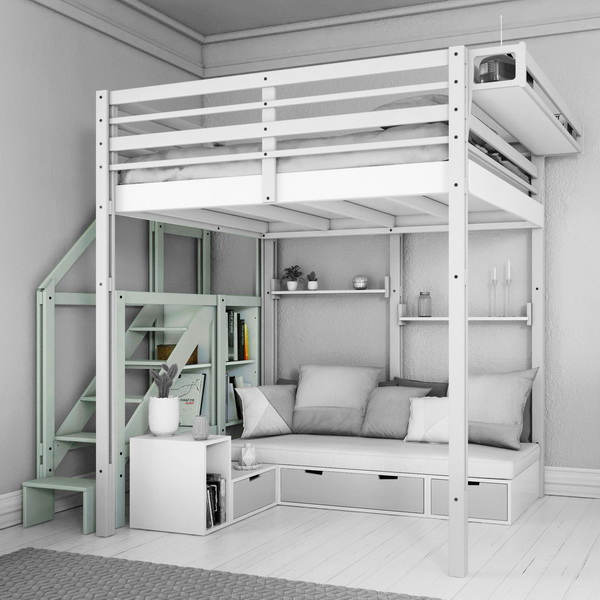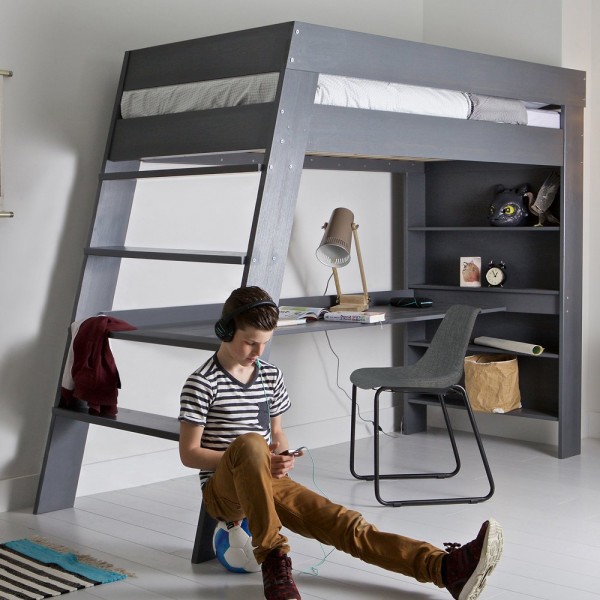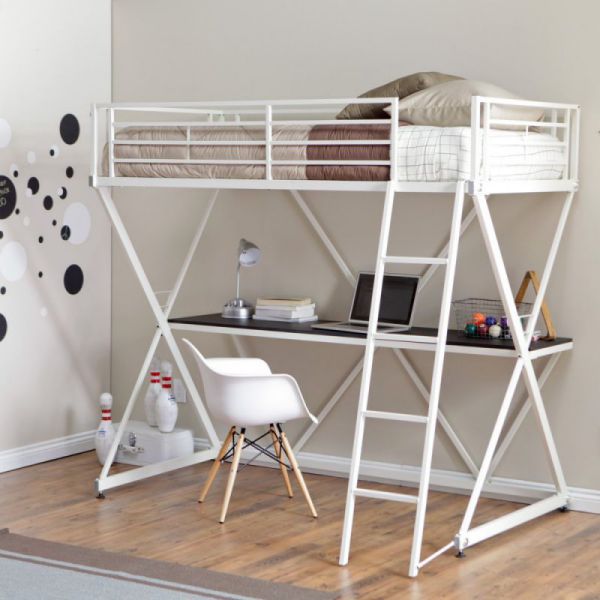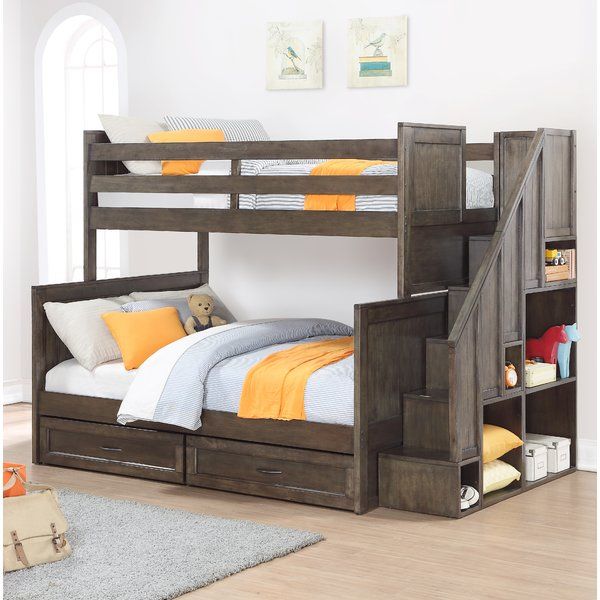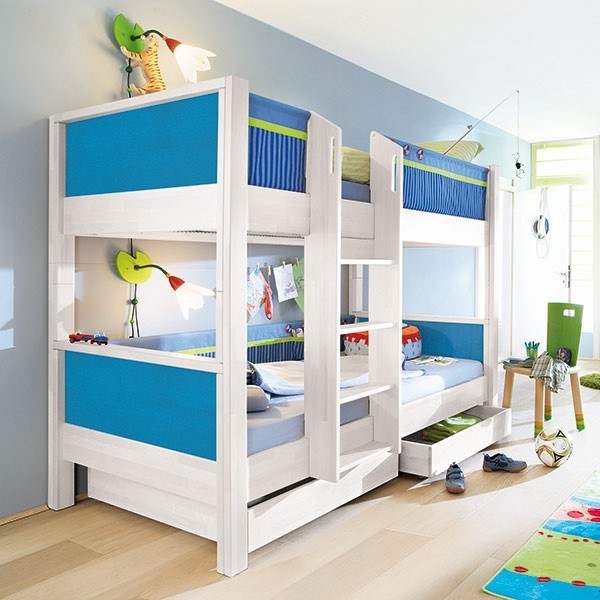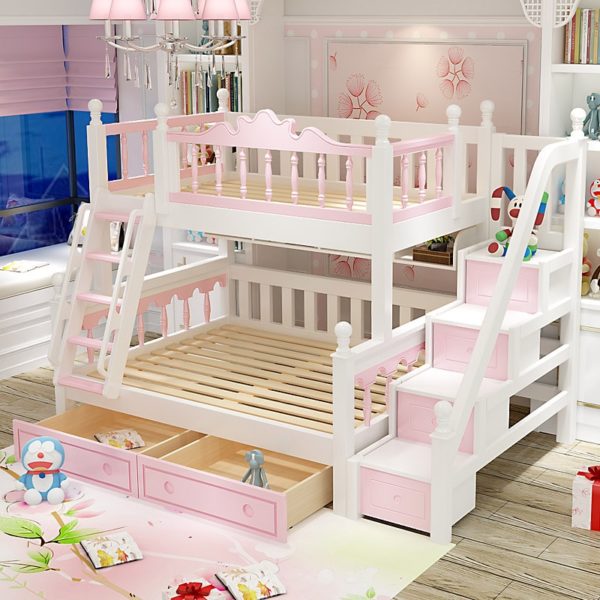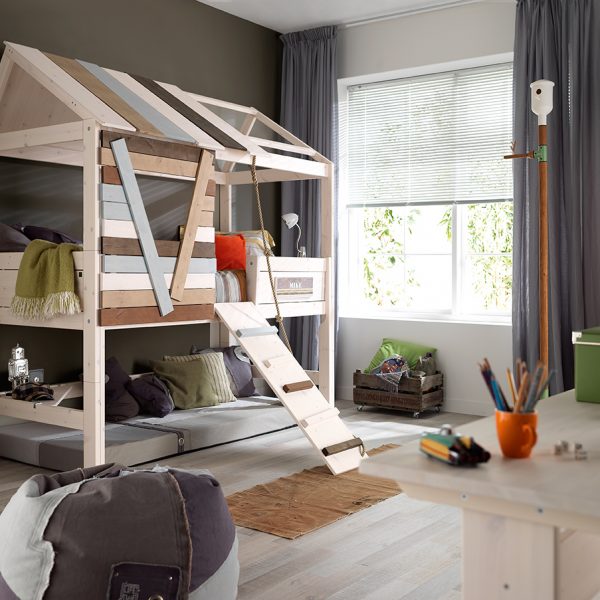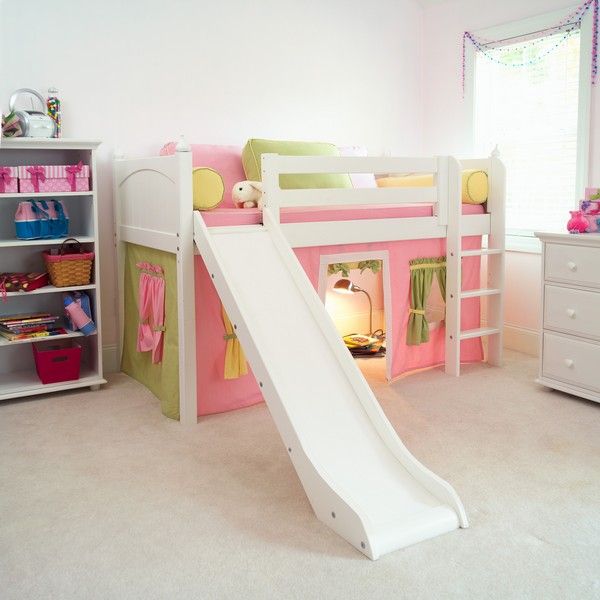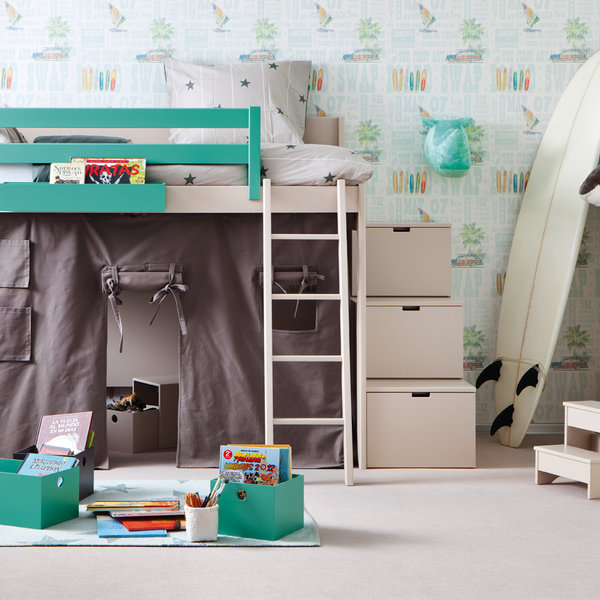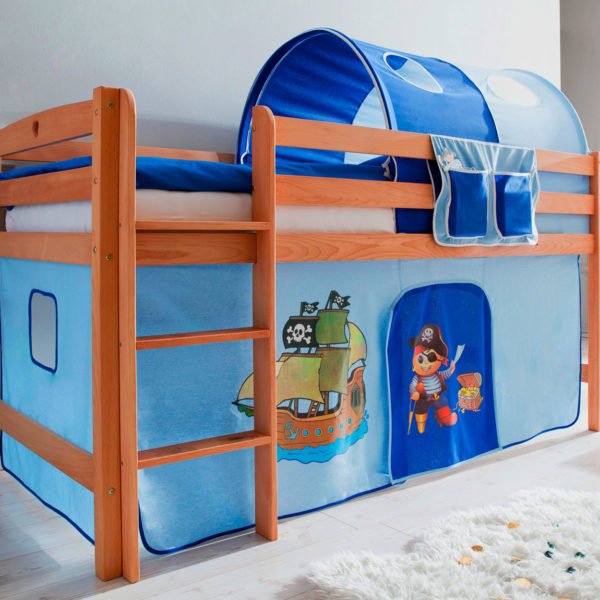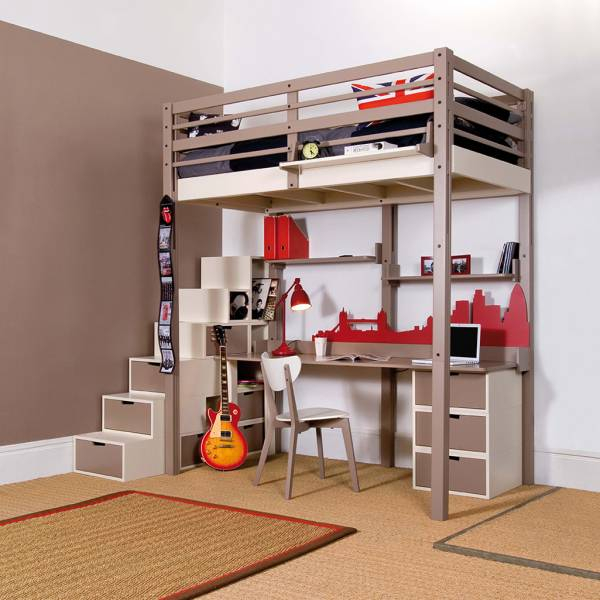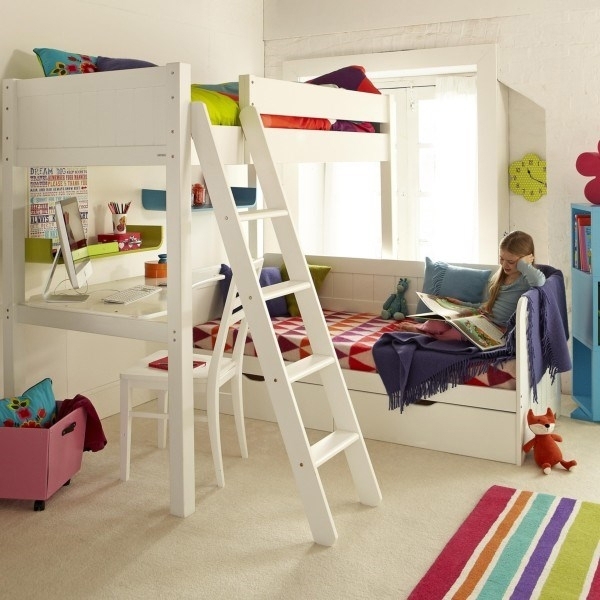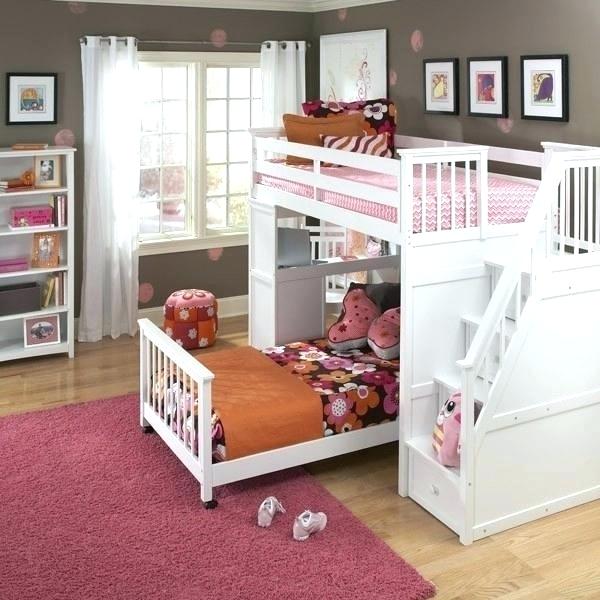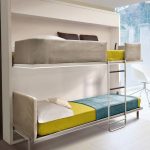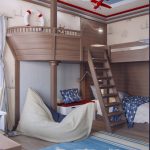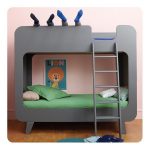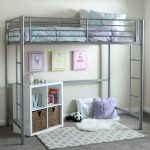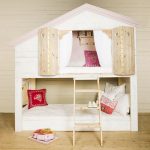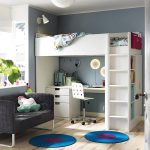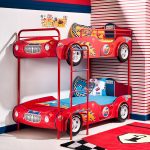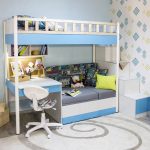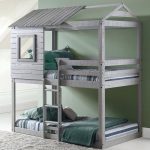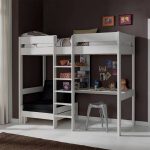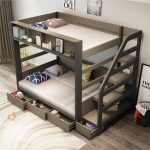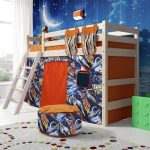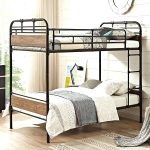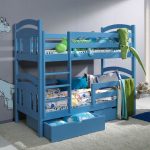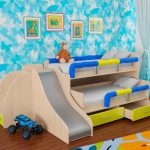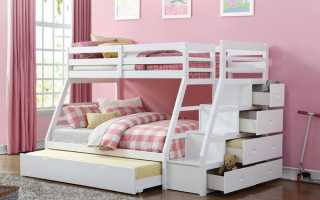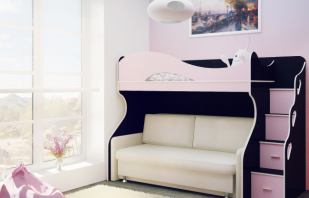Types of bunk beds for children with sides, selection criteria
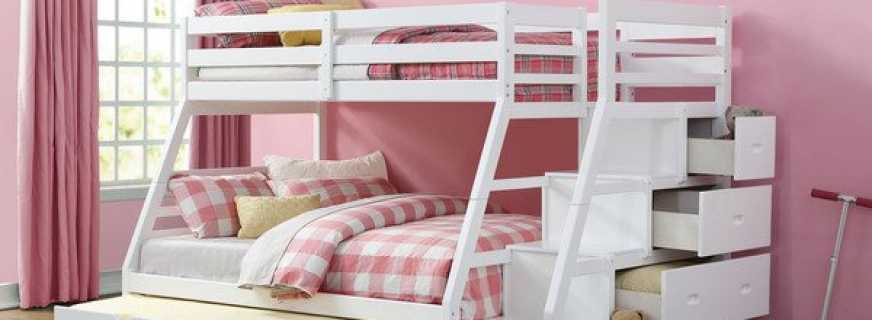
Making a children's room is not only the right choice of wallpaper, decor, lighting, but also the convenience of subsequent operation. First of all, attention is paid to furniture and its location - this sets the tone for the style and interior of the room. In a small room, a bunk bed for children with sides is used, which is designed for both one child and two. In her choice, they are guided by the basic rules and recommendations from manufacturers.
Content
Benefits & Features
A bunk bed is an excellent solution for families with one and two children. Models of manufacturers are pleased with the variety. Under the upper tier, which represents a berth, an open space is left for the games of the kids or are placed:
- folding sofa for spending time during the day;
- shelves for storing toys, stationery, books, textbooks;
- a small cupboard;
- a desk - you can replace a full-fledged computer version.
The following advantages of the described models are distinguished:
- Space saving is the first reason for choosing a bunk bed, regardless of the number of children. Often this is the only way to place a corner for kids in a one-room apartment. If you have a children's room with the help of the presented model, you can increase the free space for the games of the baby.
- Budget Savings - These models accommodate a bed, desk, nightstands for toys, wardrobe.
- Comfort and interest of children - kids like complex designs, so you can take naughty people for a while with a bunk bed. In addition, modern models originally complement the design.
Despite the significant advantages, one should not forget about the disadvantages, which include:
- Injury hazard. Models with high sides on the second tier of the berth can solve the security problem, but not always. During the game, children cease to be neat, so the risks of falling from a height increase.
- The condition of the stairs, its inconvenience to use. Young children cannot actively move, for example, along a metal vertical structure. Her unsatisfactory condition also becomes dangerous.
- The inconvenience of exploitation - not all children can sleep peacefully on the upper tier. This is due to a psychological factor - low ceilings put pressure on a person, which is why nightmares and insomnia begin to disturb babies.
The task of parents who have chosen a two-tier model is to regularly check the staircase during operation, regardless of its design. It is important to pay attention to the condition of the screws used - their looseness will lead to breakage during loading, which will lead to injury to the child.
Types of structures
Manufacturers massively produce various models of bunk beds. All of them are divided into the following varieties:
- With two sections - the products have a removable second tier. They are suitable for preschoolers and schoolchildren of different ages. It is noteworthy that such bunk beds for children with bumpers are transformed into two standard beds as they grow.
- Two-level for one child are attic beds in which additional elements are placed under the upper tier.
- Models with additions - under the berth located on top, place a children's play area depending on the preferences of the child.
- Transformable - the upper tier can be placed at any angle, which is convenient when moving furniture in the children's room.
- Modular - in these models there are cabinets and shelves, drawers and other attributes designed to store personal items.
- With fixed tiers - this is a one-piece design, often involving the combination of only two berths, located one below the other and connected by a wooden or metal staircase without additional inclusions. Similar models were common in Soviet times when, due to lack of space, parents saved space.
- One and a half tiers are two berths placed under each other. The lower tier is made in the form of a box that slides inward if necessary. The design is not strong, therefore it is not recommended for use by children.
Beds are also divided into varieties depending on the age and size of the bed:
- up to 3 years - 120 x 60 cm;
- from 3 to 6 years - 140 x 70 cm, 150 x 70 cm;
- from 7 to 14 years - 160 x 80 cm, 170 x 80 cm;
- over 14 years old - 180 x 90, 190 x 90 cm.
It is important to pay attention to the height of the sides (recommended 30 cm and above), which can be removable and non-removable. These elements play an important role in ensuring the safety of the child. It is better not to choose bunk beds with removable sides for hyperactive and young children who can simply remove them during the game. Flat pillows should be positioned so that children can comfortably climb onto the second tier. It is advisable that the sides have rounded corners to reduce the risk of injury.
Manufacturers work on individual orders and can create any bed, for example, a fabulous model for one child (designs in the form of locks, cars, ships, and so on) or a model for 3 or more children. Parents prefer to choose more practical options - classic, with a minimum number of drawings, possibly transformed. Simpler options cost from 15,000 rubles.
Ladder requirements
It is imperative that the staircase is safe for children. Ideally, it starts from the floor, and the gaps between the steps are not too wide or narrow. The bunk bed may have the following stair designs:
- Vertical is a common but unsafe design. The staircase consists of steps placed one above the other and connected by metal bars. It is the most compact, but suitable only for children of school and adolescence, as it is not safe.
- At an angle - it takes up more space, but is considered safer for use by children. The angle of placement can be different - the larger the more comfortable and safer the climb. Minus - when using this type of design, the price of the bed can be significantly higher.
- The drawer ladder is a rather bulky design, but the safest one. The steps are flat, under them are niches for storing things. Thanks to them, free space is saved. The disadvantages of these designs are not noticed.
- A staircase-shelving is often an attached structure in which under the steps there is free space with shelves. A significant minus - dust accumulates on them.
- Podium - a complex, but comfortable design that combines elevation and stairs. The latter can be placed both above and below. Products with a podium staircase look interesting, children like them very much, but often such beds are expensive, as they are a design idea.
The most convenient are inclined structures and cabinets with drawers. They are recommended to choose when ordering a bed for preschool children.
Materials of manufacture
For the manufacture of bunk beds, manufacturers use the following materials:
- Metal. Models from this material are not much in demand, because they have a specific appearance that requires a certain design in the room. Parents are also concerned about the safety of children and believe that hitting a child against metal will cause more injuries than against wood. Such designs have greater strength and long-term operation than the rest, so their cost is higher.
- Tree. For the manufacture, manufacturers use pine or oak. The design is diverse, the material is natural and environmentally friendly. Often, parents have to choose a natural tree due to the child's predisposition to allergic reactions. The material needs constant prevention - it has to be covered with protective solutions to prevent spoilage. Another minus is that the tree does not tolerate high humidity and sudden changes in temperature.
- MDF, particleboard and chipboard are inexpensive materials, the popularity of which is only increasing. They boast a wide design of models, are easy to process and durable in operation. Manufacturers laminate materials and, if necessary, paint with a safe for children. Among the shortcomings can be distinguished fragility and a greater likelihood of damage from mechanical stress.
As for the base of the berth, it is better to give preference to orthopedic lattices, rather than a hard bottom. The former are recommended not only by manufacturers, but also by doctors - with their help, you can maintain an even posture in the child. Users note the durability of such a design.
Additional items
The bed may have additional elements that will please the child:
- Ropes - they are placed in the corner of the upper tier, often attached to the side itself, if the design allows it. An important element in this case is practicality and safety. In the absence of a child's interest in the rope, this element will interfere. Safety is provided by high-quality fastening.
- Slides are additional elements attached to the upper tier along which children can slide down. It is the responsibility of the parents to check the attachment point. It is better to give preference to a one-piece design - a “molded” connection of the slide and the upper tier.
- Hinged shelves on the sides - designs that allow you to fold things without going down to the floor. It is better not to use them at all, since the child often hits the corners during the game. For schoolchildren, such additions are necessary for stationery, toys, and other small items.
Additional items are selected according to the preferences of the child. It is better to ask him what is needed for a convenient and comfortable pastime.
Criterias of choice
Parents should pay attention to the following bed selection criteria:
- The strength of the structure, on which the safety of the active child depends. All components must be available and used in accordance with the instructions.
- A sufficient height of the sides - from 30 cm and above, taking into account the size of the mattress on the second floor. The minimum protrusion above a soft surface should be 20 cm or more.
- Safe staircase - it is chosen in accordance with the age, physical development of the child.
- Certified manufacturers - they must have the appropriate licenses for the production of children's furniture, and each product must have its own quality certificate confirming safety.
- The absence of chips on the finished product - their presence indicates a marriage that requires immediate replacement.
Regardless of the above recommendations, the model should meet the interests of the child. So, below the bunk bed for children should have sufficient space to accommodate the playing and working areas. Kids should be comfortable using additional paraphernalia.
VIDEO


